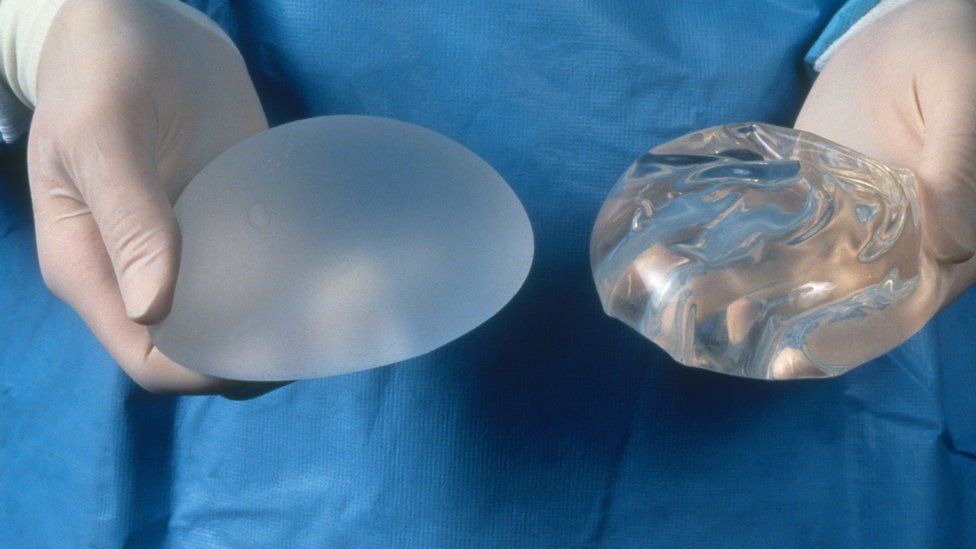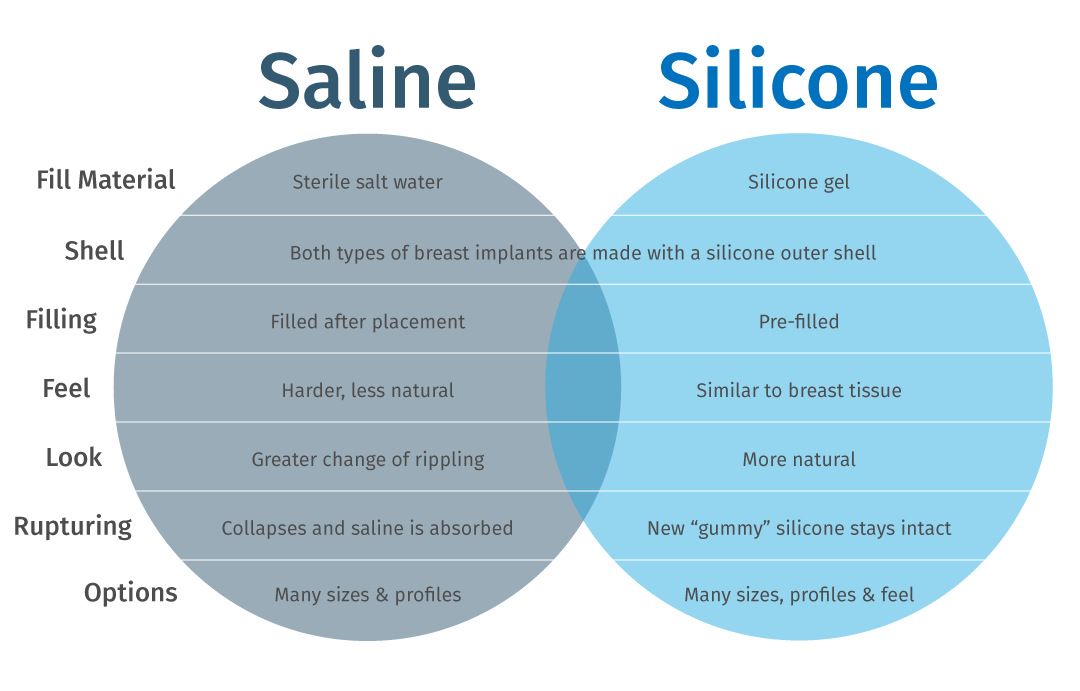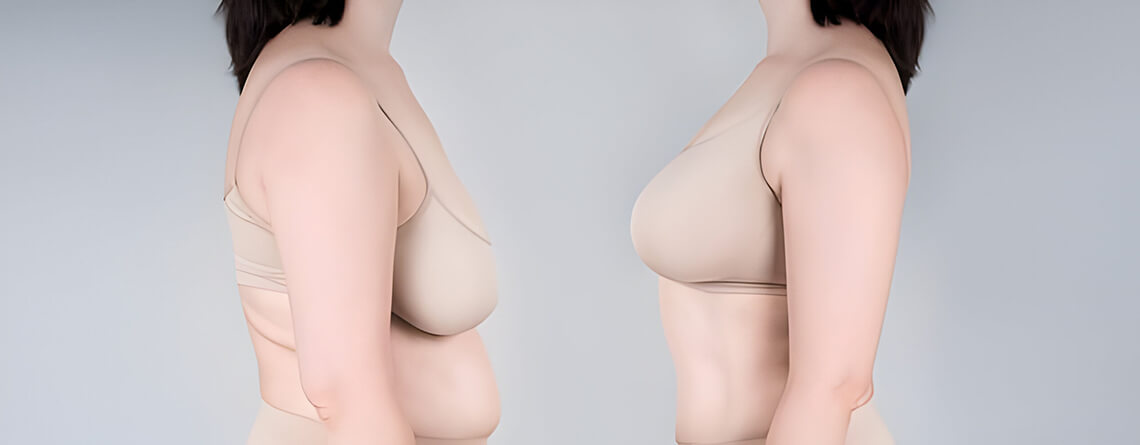When considering breast augmentation, the choice between silicone and saline Breast implant often sparks significant debate. Both types have their advantages, but deciding which one is best suited for you depends on several factors, including personal preferences, body type, and specific aesthetic goals.
In this blog, we will explore the differences between silicone and saline implant, providing you with an informative comparison to help you make an educated decision. The goal is to give you a clear understanding of the pros and cons of each type of implant, so you can make the best choice for your needs.
Understanding the Basics of Silicone and Saline Implants
Before diving into the specifics, it’s essential to understand what silicone and saline Breast implant are made of:

- Silicone Implants: These implants are filled with a cohesive silicone gel. This gel is designed to mimic the feel of natural breast tissue, making silicone implants a popular choice for many women who want a more natural look and feel.
- Saline Implants: These implants are filled with sterile saltwater. They are inserted empty and then filled to the desired size after being placed in the breast. Saline implants tend to be firmer and may feel less like natural tissue compared to silicone implants.
Aesthetic Appearance: Which Implant Feels and Looks More Natural?
One of the most significant concerns for women considering breast augmentation is how natural the implants will look and feel. This is where silicone implants tend to stand out.
- Silicone Implants: The silicone gel inside these implants is soft and flexible, closely resembling natural breast tissue. Women often find that silicone implants provide a smoother and more natural contour, both in appearance and touch. This makes silicone a go-to choice for those seeking a more realistic look.
- Saline Implants: While saline implants are still a valid option, they are more prone to creating a firmer texture. Because saline implants are filled after placement, they may create rippling or unevenness in some cases, especially in women with thin skin or minimal natural breast tissue.
Safety and Rupture: What Happens If the Implant Breaks?
The safety of your implants is a top priority, and both saline and silicone Breast implants have been thoroughly tested. However, the risks involved with rupture differ between the two:

- Silicone Implants: If a silicone implant ruptures, the gel inside may stay in the breast capsule or leak into the surrounding tissue, but it will not be absorbed by the body. This is why it’s essential to have regular checkups, such as MRI or ultrasound, to detect any rupture. The FDA recommends MRI scans every 2-3 years after getting silicone implants to ensure they are intact.
- Saline Implants: A saline implant rupture is easier to detect. If it breaks, the saline solution is harmlessly absorbed by the body, and the breast will deflate, which is an obvious sign that the implant needs to be replaced. Many women appreciate this feature as it allows them to detect problems early.
Incision Size: Which Implant Requires a Smaller Cut?
When it comes to incision size, both silicone and saline implant require similar incisions, but there are some differences depending on the implant type:
- Silicone Implants: Silicone implants typically require a slightly larger incision because they are pre-filled. The implant is placed whole into the breast pocket, which may require more space for insertion.
- Saline Implants: Since saline implants are empty when inserted, they can be filled after placement, which allows for a smaller incision. This makes saline implants a good choice for women who are concerned about scarring.
Durability and Longevity: How Long Will Your Implants Last?
Both types of implants are designed to be long-lasting, but there are some key differences in their durability:

- Silicone Implants: Silicone implants are generally considered to be more durable. They are less prone to rupture and are known to maintain their shape over time. However, they may require a longer recovery period after surgery, and the monitoring for rupture can be more extensive.
- Saline Implants: Saline implants, while safe and effective, can sometimes be more prone to deflation or leakage over time. However, they are less expensive than silicone implants, which makes them an appealing option for those on a budget. In general, saline implants may not have the same lifespan as silicone implants.
Cost: What’s the Price Difference?
Cost is often a deciding factor when choosing between silicone and saline implants. Here’s what you need to know:
- Silicone Implants: Because of the advanced materials and technology used in manufacturing silicone implants, they tend to be more expensive. The price can vary depending on factors like the surgeon’s fees, the type of silicone used, and the complexity of the procedure.
- Saline Implants: Saline implants are generally more affordable than silicone implants. They are made with basic materials, which can result in a lower overall cost. If you’re working with a tighter budget but still want breast augmentation, saline implants may be a more cost-effective option.
Choosing the Right Implant: Factors to Consider

Making the right choice between silicone and saline implants comes down to several factors that vary for each individual. Here’s a quick checklist of considerations to help you decide:
- Your Desired Look: If you want a more natural look and feel, silicone implants are typically the better option.
- Budget: If cost is a concern, saline implants may offer a more affordable alternative.
- Body Type: Consider your body type and the amount of breast tissue you already have. Women with thinner skin may benefit from the softness of silicone, while those with more tissue may find saline implants suitable.
- Long-Term Monitoring: Silicone implants require more frequent monitoring with MRIs, while saline implants can be detected through deflation.
Consulting with experienced surgeons like Dr. Vinay Jacob and Dr. Ashish Magdum can provide the guidance you need. Their expertise and compassionate approach ensure that you are in safe hands, whether you opt for silicone or saline implants. The Plastic Surgeons Team Of Expert Having Years Of International Experience Which Provide Surgical, Non-surgical And Reconstructive Surgery Which Includes Hair Transplant, Liposuction, Tummy Tuck, Rhinoplasty, Facelift, Breast Augmentation, Gynecomastia & Many More.
FAQs
1. How long do silicone breast implants last?
Silicone implants are designed to last for many years, typically around 10-20 years. However, it’s essential to monitor the implants regularly with checkups and scans.
2. Are saline implants safer than silicone?
Both saline and silicone implants are considered safe, but silicone implants can be harder to detect if they rupture. Regular monitoring is required for silicone implants to ensure their integrity.
3. Can saline implants be easily repaired if they rupture?
Yes, saline implants are easy to repair. If they rupture, the saline is absorbed by the body, and the breast deflates, making it easier to detect the issue and schedule a replacement.
4. Do silicone implants feel more natural than saline implants?
Yes, silicone implants tend to feel more like natural breast tissue compared to saline implants, which can feel firmer and more artificial.
5. Is the surgery for silicone and saline implants the same?
Yes, the surgical procedure for both types of implants is similar. The primary difference lies in the size of the incision required and the type of implant being inserted.
Conclusion
Choosing between silicone and saline breast implants ultimately depends on your personal preferences, budget, and aesthetic goals. Both options have their advantages and drawbacks, but with proper research and professional consultation, you can make an informed decision that will align with your desired outcome.
